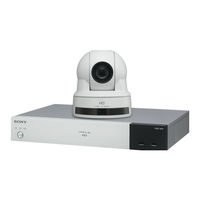
Sony PCS-XG100 Manuals
Manuals and User Guides for Sony PCS-XG100. We have 5 Sony PCS-XG100 manuals available for free PDF download: Operating Instructions Manual, Manual, System Integration Manual, Installation Manual, Quick Connection Manual
Sony PCS-XG100 Operating Instructions Manual (297 pages)
HD Visual
Communication
System
Brand: Sony
|
Category: Conference System
|
Size: 9.7 MB
Table of Contents
Advertisement
Sony PCS-XG100 Manual (86 pages)
Supplement for HD Visual Communication System
Brand: Sony
|
Category: Conference System
|
Size: 4.43 MB
Table of Contents
Sony PCS-XG100 System Integration Manual (21 pages)
HD VIDEO COMMUNICATION SYSTEM
Brand: Sony
|
Category: Conference System
|
Size: 0.71 MB
Table of Contents
Advertisement
Sony PCS-XG100 Installation Manual (2 pages)
HD Visual Communication System
Brand: Sony
|
Category: Conference System
|
Size: 0.09 MB
Sony PCS-XG100 Quick Connection Manual (2 pages)
HD Visual Communication System
Brand: Sony
|
Category: Conference System
|
Size: 0.46 MB
Advertisement




